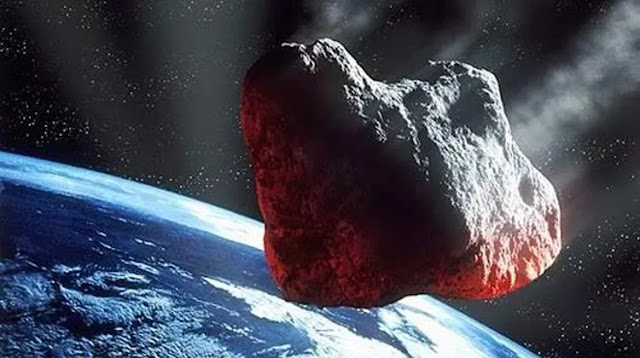Two skyscraper-size asteroids are barreling toward Earth this weekend
Both objects will go far outside the lunar orbit.
This weekend, two asteroids the size of skyscrapers are speeding toward Earth. One will make its closest approach on Friday, July 29, while the other will pass by on Saturday (July 30).
NASA estimates that the first asteroid, 2016 CZ31, will come by at a speed of 34,560 mph (55,618 km/h) on Friday about 7 p.m. ET (23:00 GMT).
The asteroid, which is roughly as wide as a 40-story skyscraper is tall, is thought to be 400 feet (122 meters) across at its widest point. The asteroid will pass around 1,740,000 miles (2,800,000 kilometers) from Earth, or more than seven times the typical distance between Earth and the moon, safely avoiding our planet. The next near encounter of this space rock with Earth is expected for January 2028, according to NASA.
A second, bigger asteroid will pass by Earth on Saturday, albeit it will be further away. At its widest visible point, that asteroid, 2013 CU83, is roughly 600 feet (183 meters) across. It will pass Earth at a distance of 4,320,000 miles (6,960,000 kilometers), or nearly 18 times the typical distance between Earth and the moon.
At 7:37 p.m. ET, this enormous space rock will be approaching the planet at a speed of 13,153 mph (21,168 km/h) (23:37 GMT).
The asteroid 2022 NF, which passed within 56,000 miles (90,000 km) of Earth on July 7, or roughly 23 percent of the average distance between Earth and the moon, is far farther away from both of these close encounters.
Thousands of these near-Earth objects are carefully monitored by NASA and other space organizations. There is a very small chance that an asteroid's orbit could slightly change after coming into contact with the gravity of a larger object, such as a planet; even such a small shift could potentially put an asteroid on a collision course with Earth during a future flyby. This is true even if an asteroid's trajectory places it millions of miles away from our planet.
As a result, space agencies are quite serious about planetary defense. The Double Asteroid Redirection Test (DART), a NASA asteroid-deflecting spacecraft, was launched in November 2021 and will collide with the 525-foot-wide (160 m) asteroid Dimorphos in fall 2022. The asteroid won't be destroyed by the impact, although Live Science previously claimed that the space rock's orbital route may be somewhat altered. Should an asteroid threaten the globe in the future, the mission will assist evaluate the effectiveness of asteroid deflection.




Comments
Post a Comment